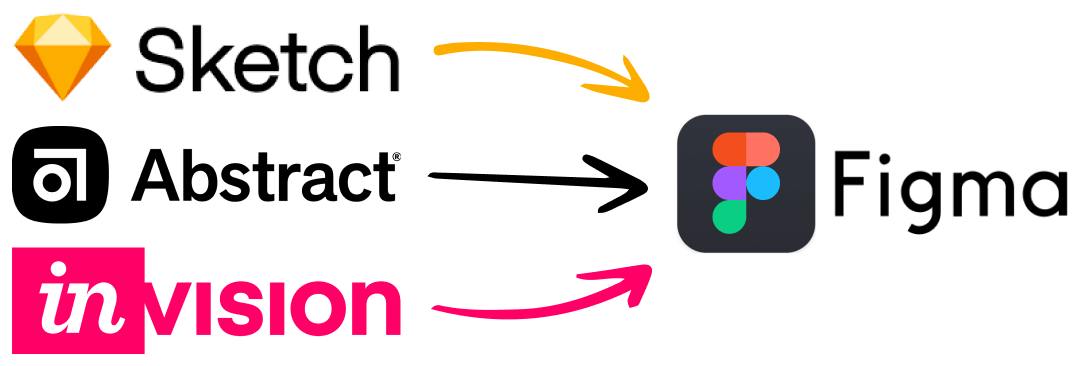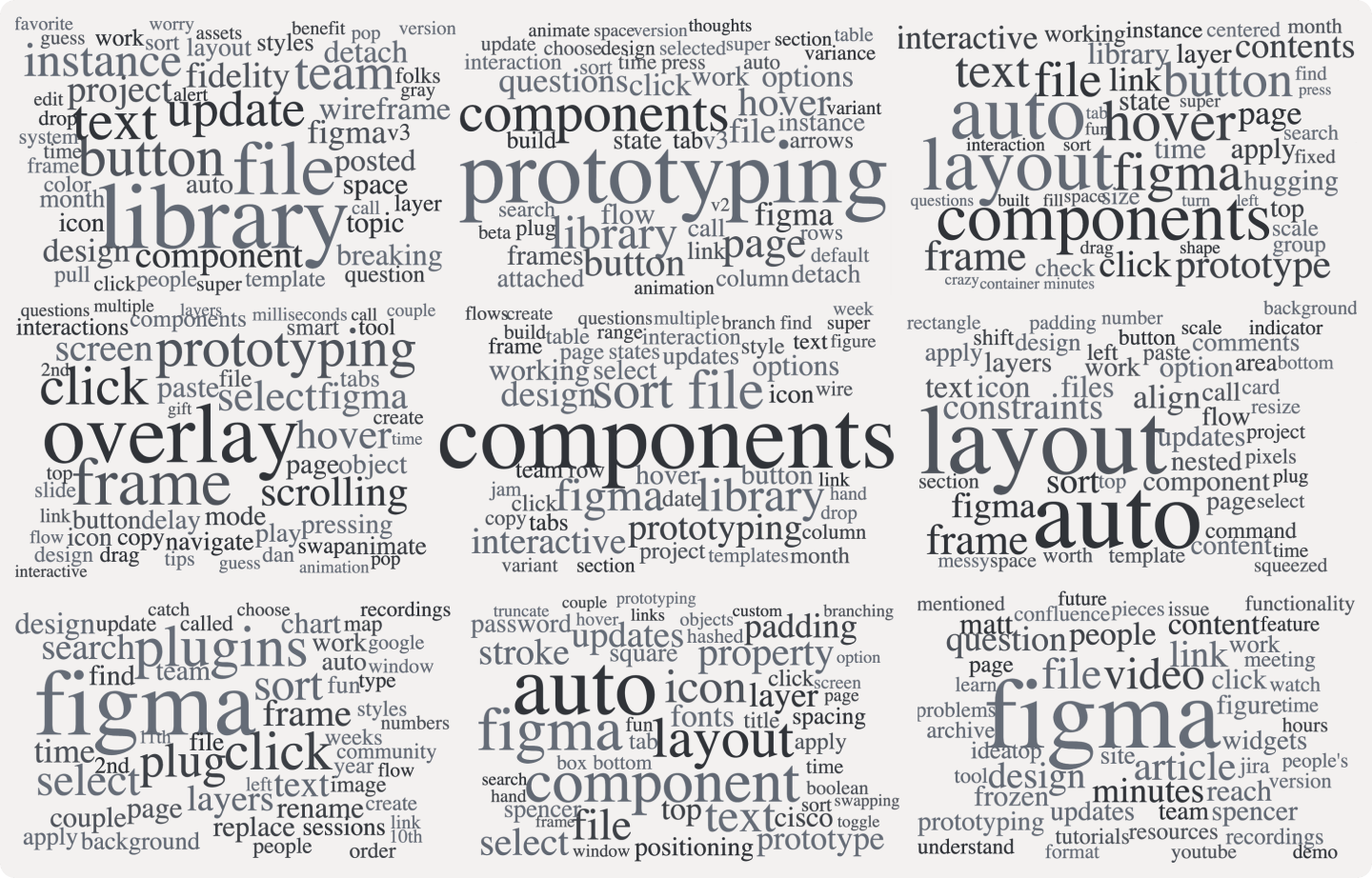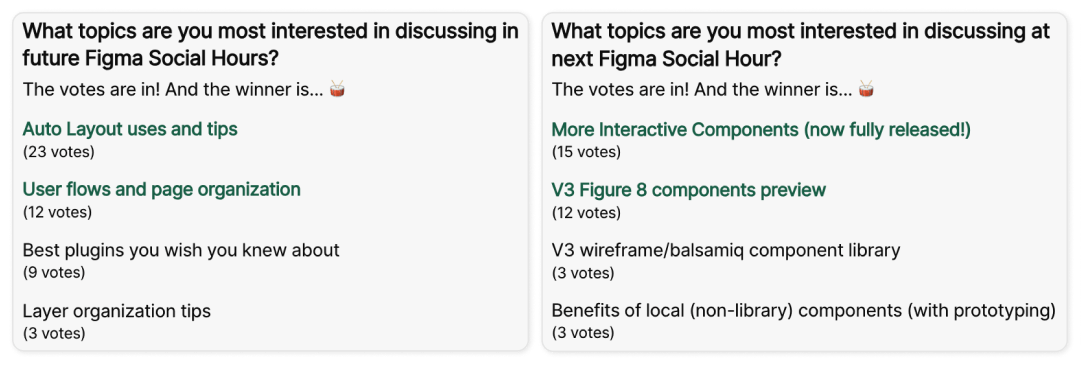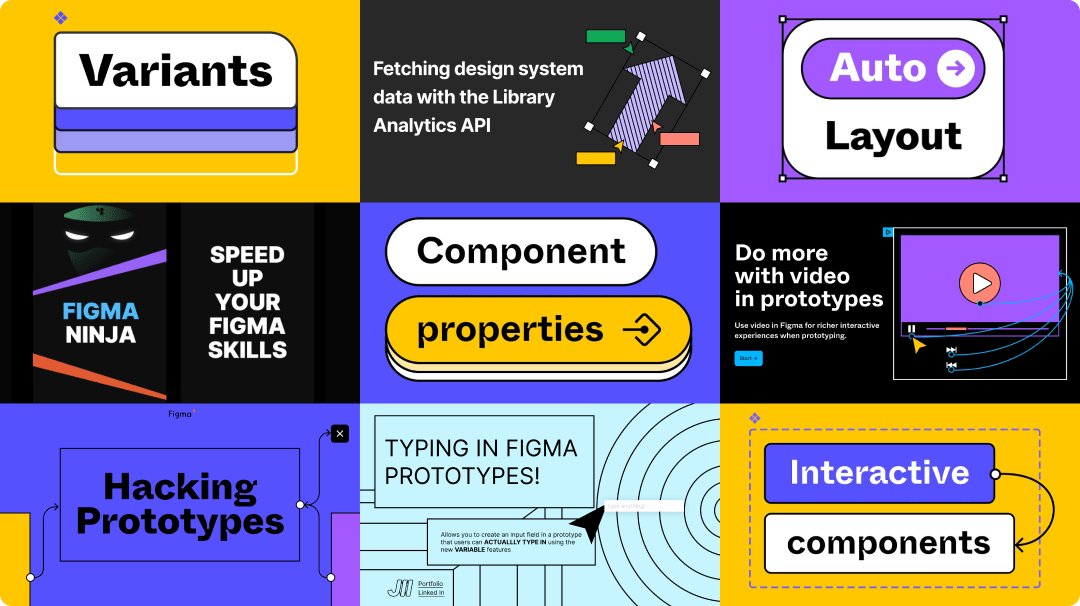Figma Teaching & Enablement
Design Tooling // Figma Education // Design System Onboarding
What It Is:
I was early to the Figma hype when it started gaining traction and it was clear that they were making progress much faster than Adobe or Sketch.
As it gained the industry's interest, I took it upon myself to educate my teams on how we could get the most out of Figma. It went pretty well - My Cisco team even nicknamed me "Figmatt"!
What I Did:
- Hosted learning workshops, posted tutorials and tips, and onboarded entire teams onto Figma.
- Served as the indefinite, on-call Figma expert for Cisco's Customer Experience team.
- Worked with directors and managers as a Figma admin to coordinate transitioning out of Sketch.
What I Learned:
- Everyone learns so very differently. It's vital to ensure that people don't get left behind the team.
- Diversifying my methods of teaching helped me reach larger groups of people more successfully.
- Teaching by example and embracing my own mistakes was strong way to connect with learners.
From Sketch to Figma
During my time with Cisco, I became a Figma expert and helped multiple teams transition their files out of Sketch, Abstract, and InVision and into Figma. After a year of using Figma for Momentum Design, I led a pilot group to test Figma for my new Cisco team. After 4 months, we fully transitioned into using Figma.

Onboarding and Feature Training
I started by educating designers on topics like Figma's file structure, interface, permissions, and basic canvas tools, to name a few. This ensured that I was setting designers up with a solid understanding of Figma's building blocks to set us all up for more comprehensive learning sessions down the road.
Then we moved on to Figma's more complex features. I hosted demos for auto layout, styles, components, prototyping, plugins, and other advanced topics.
Facilitating a Learning Culture
We had a quiet, remote team which sometimes made it difficult to gauge progress during demos. I utilized a few methods to encourage our team to open up more - anonymous topic requests, polls to vote on topics I covered, an indefinite offer to help anyone 1-on-1, and reminders that we're all still learning.
This may sound strange, but some of my favorite teaching moments were when I was the one who was having an issue during a demo. My team often assumed I was the perfect Figma user (even nicknaming me "Figmatt") so when I had the chance to show them that I'm still learning as well, it let the walls come down.
Scheduled Outreach
In order to balance my design system work with my Figma education ventures, I established a timeline for when my team could expect to learn from me. With this, I was able to assist more people collectively since my topic surveys and Q&A sessions often showed a large overlap in questions.
I also set aside time to record some onboarding videos on the basics and how our team operated within Figma to help my team's new and incoming designers.
Conversely, I also created sessions for designers who were looking to get the most out of Figma to discuss advanced features. We discussed topics like libraries, advanced component workarounds, and the latest features.
Embracing Outside Resources
I would often direct my team towards some of the many amazing resources that other passionate designers have made to help educate people. I would combine some of my favorite resources with the components and styles that my team was familiar with in order to connect it back to our day-to-day work within Cisco.
Credit to the makers of these demo files and creators that inspire me: Miggi, Rogie King, Honza Toman, Vijay Verma, John Welch, Bernat Fortet, and Figma.
More Projects

Cisco Web Design SystemDesign Systems

Webex Momentum DesignDesign Systems

Cisco CX Cloud RedesignProduct Design

Marketing VideosFreelance



